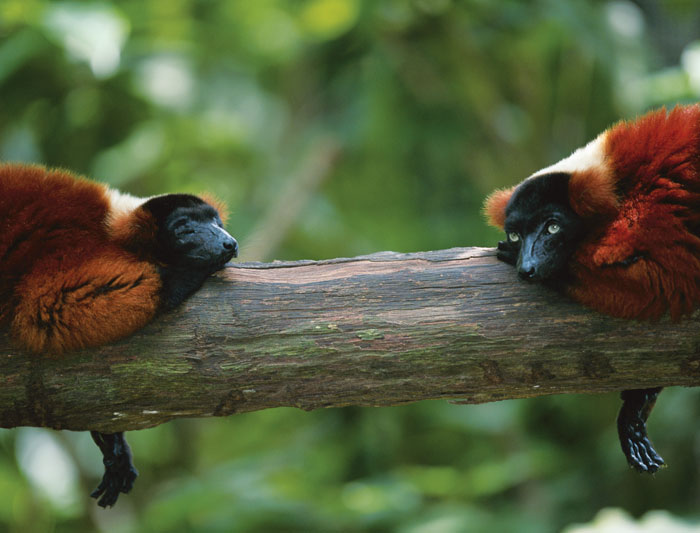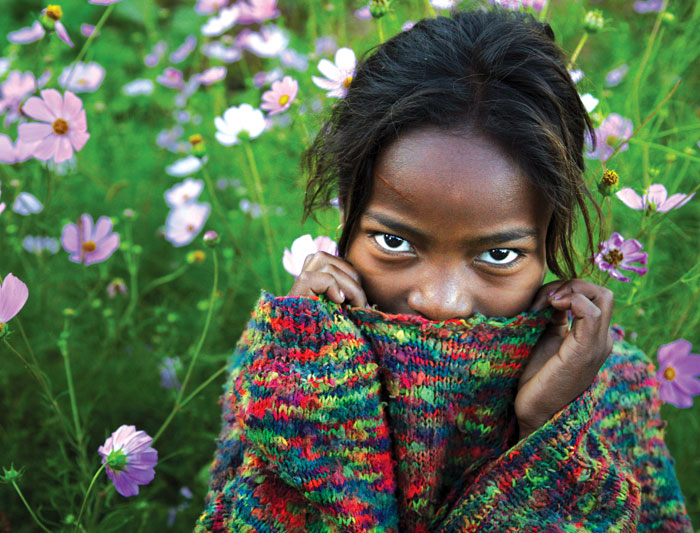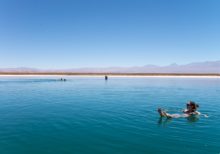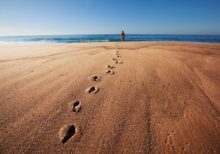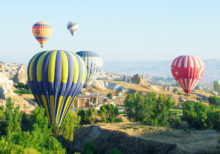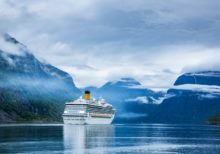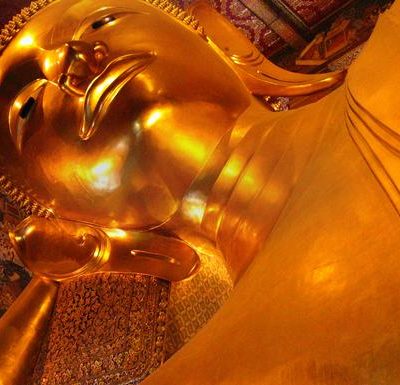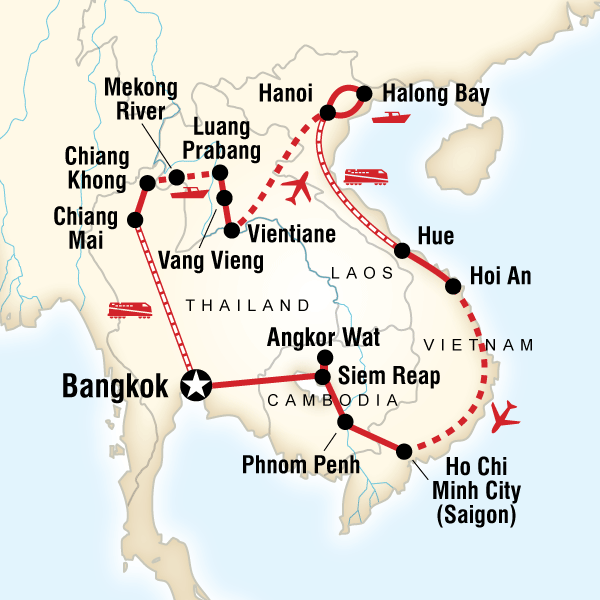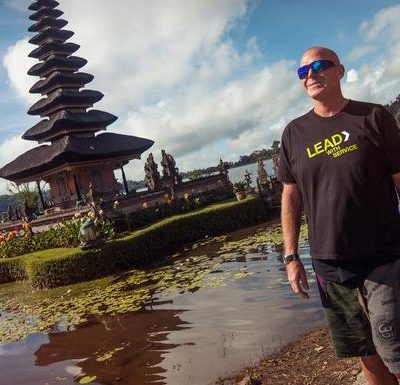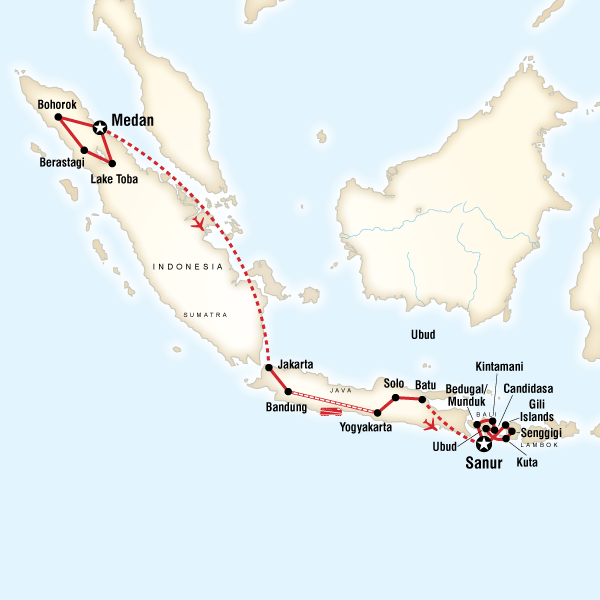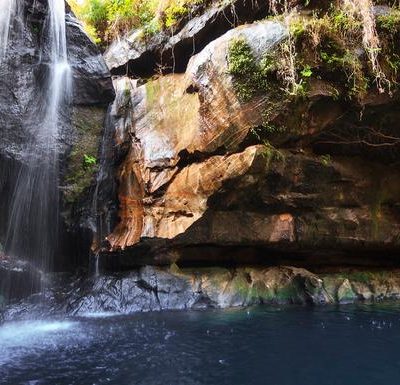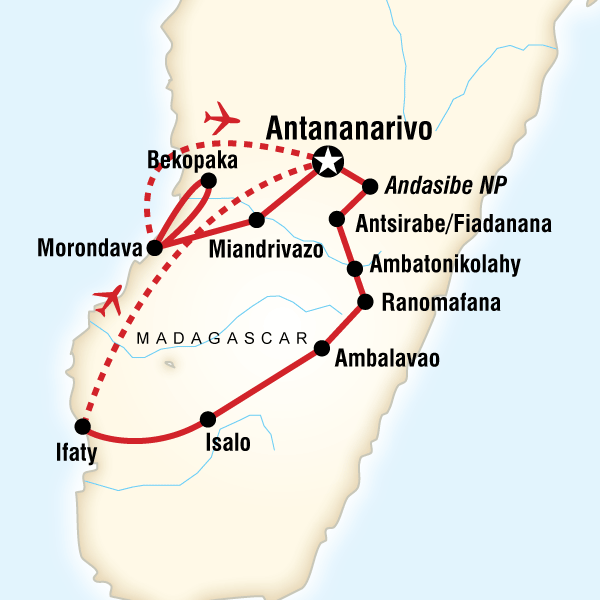| Starts | Antananarivo, Madagascar |
|---|---|
| Ends | Ile Sainte-Marie, Madagascar |
| Region | Madagascar |
| Duration | 16 days |
| Tour Operator | Intrepid Travel |
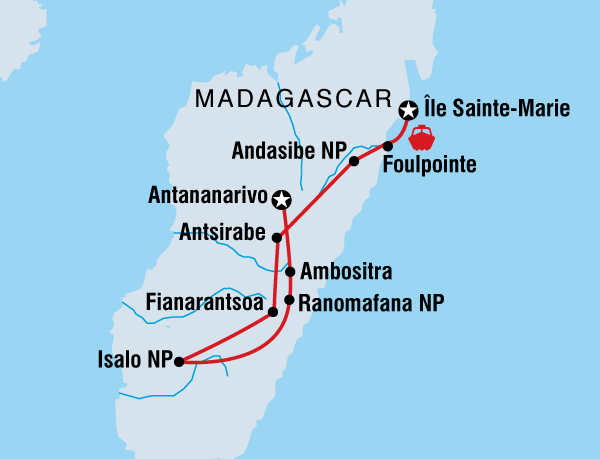
Itinerary
Day 1 - Starting: Antananarivo & Finishing: Antananarivo
Tonga soa Bienvenue! Welcome to Madagascar. Your adventure begins with a Welcome Meeting at 6pm on Day 1. Please look for a note in the hotel lobby or ask the hotel reception where it will take place. If you can't arrange a flight that will arrive in time, you may wish to arrive a day early so you're able to attend. We'll be happy to book additional accommodation for you (subject to availability). If you're going to be late, please inform the hotel reception. We'll be collecting your insurance details and next of kin information at this meeting, so please ensure you have all these details to provide to your leader. Antananarivo is Madagascar's charmingly crowded capital. If you arrive early, take some time to get acquainted with the city - hilly Antananarivo is a fun place to explore. Head to Analakey to visit the permanent street markets or seek out the restaurants and nightclubs.
Day 2 - Starting: Ambositra & Finishing: Ambositra
Rise early and depart for Ambositra on the National road number 7 ( approx 260km, 6hrs ). On the way, we will briefly stop at Ambatolampy, a small town well known for its aluminium pot workshops. Continue our journey making another short stop in Antsirabe. With the tranquillity of a small European town, Antsirabe maintains a Malagasy touch, which it reveals in its markets and traditional quarters. Founded in the 19th century by Norwegian missionaries as a high-altitude retreat, the town was nicknamed 'Malagasy Vichy' for its hot springs and thermal baths. Arrive in Ambositra this afternoon. Visit one of the many small workshops that specialise in crafts as diverse as printmaking, woodcarving and marquetry. Ambositra is the home of the Betsileo ethnic group, the third largest ethnic group of Madagascar. Located close by the Zafimaniry forest, Ambositra is most famous for its woodcraft but it's also known for its silk production, which is very important in the Malagasy culture. The use of silk was once reserved exclusively for royalty but now everyone can wear it, though most of the time its use is reserved for the dead. When a Malagasy is buried, his body is wrapped in a large silk sheet called a 'lambamena'. After a few years, the family traditionally goes back to the tomb and changes this silk sheet with a new one - a custom known as 'famadihana'.
Day 3 - Starting: Ranomafana National Park & Finishing: Ranomafana National Park
Depart early this morning for the nearby Manandriana villages, to explore the silk process. Each village is specialised in one step of the production, fully handmade. Enjoy a traditional homestead lunch in the village before travelling on to Ranomafana National Park ( 140km, approx 6.5hrs ). Your accommodation for tonight is a small cottage located within the Park. Ranomafana means 'hot water' in the Malagasy language and this mountainous rainforest area is a haven for small mammals, birds, reptiles and insects, as well as precious-wood trees, palms, bamboo, orchids and carnivorous plants. Ranomafana National Park is home to 13 species of lemur including the famous golden bamboo lemur, first reported at Ranomafana in 1985 and one of the reasons why the government decided to protect this endangered forest.
Day 4 - Starting: Ranomafana National Park & Finishing: Ranomafana National Park
Explore Ranomafana National Park on a guided walk, keeping your eyes peeled for lemurs, striped civets, mongooses, goshawks, geckos, frogs and butterflies. You may get a chance to spot a net-casting spider, or the world's smallest chameleon.
Day 5 - Starting: Isalo National Park & Finishing: Isalo National Park
Drive to Isalo National Park ( 330km, approx 8hrs ). On the way we will stop at the ANJà community reserve, a very good spot for observing lemurs and discovering the local culture. Villagers will be your guides for this excursion. Your tour leader will translate all the knowledge they have to give you. Continue on to the small city of Ambalavao, and visit of the Antemoro paper factory.
Day 6 - Starting: Isalo National Park & Finishing: Isalo National Park
Today we have a full day to explore the park and discover its inhabitants with a local guide. Isalo National Park is known for its contrasting scenery of deep canyons, crazy sandstone formations and open grasslands. The park is home to over 80 species of birds, 30 species of reptiles and 14 species of mammals including 3 lemur species (ring-tailed, red-fronted and Verreaux's sifakas lemur).
Day 7 - Starting: Isalo National Park / Zombitse National Park & Finishing: Isalo National Park / Zombitse National Park
Start the day with a visit to the nearby mining town of Ilakaka, where we'll go on a guided tour of the sapphire mines. When sapphire was discovered in Ilakaka in 1999, this small village of a dozen houses grew into a mining boomtown, driving Madagascar to become the world's largest sapphire exporter. Today about 30,000 people live here, seeking their fortunes in the hand-dug mine pits, or in gravel sifted from the river. During our visit, we will learn about traditional mining techniques (using “Angady” or spades), which represent an entire life for people. Later, continue on to Zombitse National Park and witness a true highlight of Madagsacar: the bizarre Baobabs Trees. Also known as 'the Tree of Life', these native trees can grow up to 25 metres, with branches that form a distinctive roof-like structure. Baobab trees may be several thousand years old and have strong drought-resistant roots ideal for the harsh savannah landscape. Return to Isalo in the afternoon.
Day 8 - Starting: Fianarantsoa & Finishing: Fianarantsoa
From Isalo, we depart for the city of Fianarantsoa, known as the south door ( 320km, approx 7.5hrs ). This afternoon, enjoy a visit to the heritage-rich old city. Soak in the 19th-century charm by walking along labrythine paths and admire the flower-studded balconies of local houses.
Day 9 - Starting: Fianarantsoa & Finishing: Fianarantsoa
The colourful town of Fianarantsoa is known for its markets and handcrafts. This heritage site is a must-see with its long paved road, labyrinths of small paths and old houses with flower-studded balconies and gleaming tiled roofs. Take a day to visit a typical Magasy village, where people live a way of life still the norm for most of the island's population. Explore the countryside around Fianarantsoa, dotted with rice paddies cultivated by the Betsileo people and vineyards that produce the town's famous wine. You'll get a chance to sample local cuisine with a lunch break in the villages. In the afternoon, visit the historical old city of Fianarantsoa, a very nice area that you can only discover on foot. A local association in collaboration with the PNUD has funded people to renovate their traditional houses.
Day 10 - Starting: Antsirabe & Finishing: Antsirabe
Drive to Antsirabe where we have free time upon arrival to discover the city ( 255km, approx 6.5hrs ) With the tranquillity of a small European town, Antsirabe maintains a Malagasy touch, which it reveals in its markets and traditional quarters. Founded in the 19th century by Norwegian missionaries as a high-altitude retreat, the town was nicknamed 'Malagasy Vichy' for its hot springs and thermal baths. Colourful rickshaws, known as 'pousse-pousse', are a popular form of local transport in Antsirabe. Make use of them in your city tour and discover tree-lined avenues, mixed European-style architecture, markets and more.
Day 11 - Starting: Andasibe National Park & Finishing: Andasibe National Park
Drive to Andasibe ( 300km, approx 7hrs). On your way, stop at the Pereyras exotic park, for a visit. This private reserve is a great spot to observe chameleons, frogs, snakes and some lemurs as well. For those who want to head out and explore the forest at night, we have the opportunity to go on a nocturnal walk through the forest at Mitsinjo, a privately owned reserve to spot endemic butterflies, lemurs and other nocturnal species.
Day 12 - Starting: Andasibe National Park & Finishing: Andasibe National Park
Andasibe National Park, the most visited park in Madagascar, is famous for its 11 species of lemur but this tropical forest is also home to unique endemic birds such as the long-eared owl and the rufous-headed ground-roller, and the smallest living chameleon, Brookesia minima, plus many types of reptiles, insects and frogs.
Day 13 - Starting: Foulpointe & Finishing: Foulpointe
Head off early to reach Tamatave, the biggest commercial harbour of Madagascar ( 300km, approx 7hrs ). Please note that the roads in this area are particuarly bad and driving times can vary. On arrival we have free time to explore the city. Continue on to the coastal town of Foulpointe ( approx 2.5hrs ), a small fishermen village north of the Tamatave harbour. The vestiges of an ancient fort watch over the pirate's cemetery at Foulpointe. Stay in a simple hotel with shared facilities located on the beach front.
Day 14 - Starting: Sainte-Marie & Finishing: Sainte-Marie
Travel along the coast to the small river port of Soanierana-Ivongo and board a boat to the island of Sainte-Marie ( 105km, approx 2.5hrs ). We arrive at around 11.30am and transfer to Vanivola hotel. Rooms are basic without air conditioning. The rest of the day is free to explore at your own leisure.
Day 15 - Starting: Sainte-Marie & Finishing: Sainte-Marie
The romantic island of Ile Sainte-Marie was once a shelter for pirates and sea-faring vagabonds. Today its green hills hide a wealth of bays and coves sheltered by coral reefs, with shipwrecks to dive in, remnant primary forests with cascading waterfalls, rare orchids and a bounty of wildlife. Today is a full day of leisure to explore this lush green island. There is plenty to see and do, with optional activities such as snorkelling, scuba diving, hiking and cycling. The island is also a whale-watching hotspot between the months of July and September.
Day 16 - Starting: Sainte-Marie & Finishing: Sainte-Marie
You are free to depart any time today as there are no activities planned. Checkout time is 10am. To get back to the mainland from Sainte-Marie you can take either a flight to Antananarivo or public transport in the form of coach, boat and taxi. A direct oneway flight from Sainte-Marie to Antananarivo is by far the easiest and fastest way back to the mainland. The flight takes approximately 1hr 40mins and can be booked online with Air Madagascar. Currently this flight departs each day of the week. As with any online airfare the price will vary but currently costs around 240 Euros for economy class. We recommend that you don't plan to connect any regional or international flights within the same day. It's important to note that these flights can fill up quickly in high season and we also recommend that you purchase a re-routable ticket. For passengers wanting to travel back to Antananarivo overland or cannot book a flight the below options can be organized through your tour leader on day 1 and paid locally in Euro. Sainte-Marie to Antananarivo Take a boat to Soaniera Ivongo where a private transfer will be waiting for you to take you to Antananarivo Airport or your hotel. This option will leave early in the morning and take 12 hours. The transfer price starts at EUR 212 per person (for a minimum of 2 passengers) and may reduce in price when more passengers book. Sainte-Marie to Tamatave Take a boat to Soaniera Ivongo where a private transfer will be waiting for you to take you to Tamatave Airport arriving at approximately 1pm. The transfer price starts at EUR 123 per person (for a minimum of 2 passengers) and may reduce in price when more passengers book. Alternatively, take a 3.5 hour boat journey to Mahambo that leaves before sunrise. Take a bus from Mahambo to Tamatave City Centre arriving between 11:00 at 13:00 (depending on departure time from Sainte Marie). This service will be approximately EUR 41 per person. Tamatave to Antananarivo There is a scheduled Sunday Air Madagascar flight from Tamatave to Antananarivo at 19:05. Alternatively, to reach Antanarivo you can take a local “taxi brousse” for around 12 Euros (approx. 7hours).
View Dates

